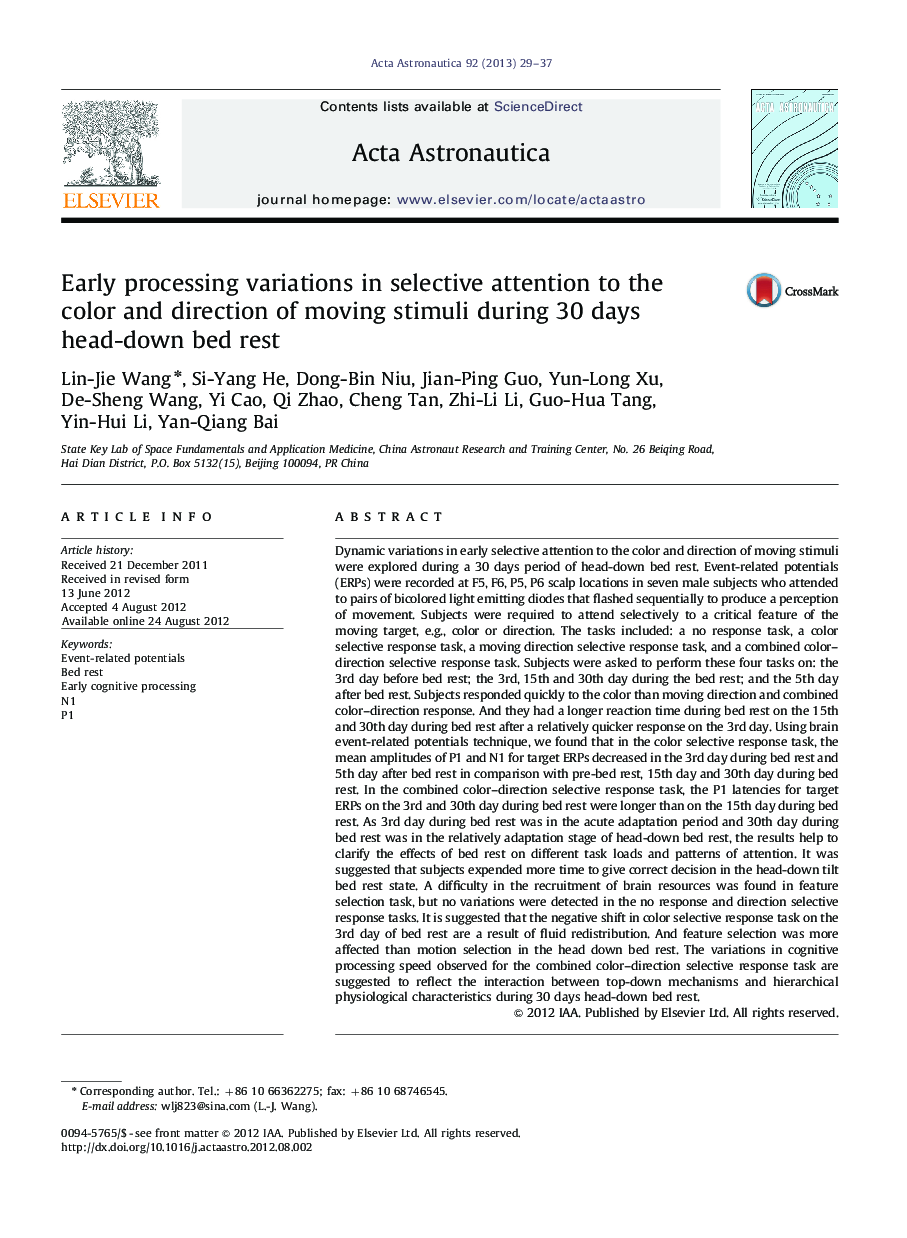| کد مقاله | کد نشریه | سال انتشار | مقاله انگلیسی | نسخه تمام متن |
|---|---|---|---|---|
| 1714923 | 1013345 | 2013 | 9 صفحه PDF | دانلود رایگان |

Dynamic variations in early selective attention to the color and direction of moving stimuli were explored during a 30 days period of head-down bed rest. Event-related potentials (ERPs) were recorded at F5, F6, P5, P6 scalp locations in seven male subjects who attended to pairs of bicolored light emitting diodes that flashed sequentially to produce a perception of movement. Subjects were required to attend selectively to a critical feature of the moving target, e.g., color or direction. The tasks included: a no response task, a color selective response task, a moving direction selective response task, and a combined color–direction selective response task. Subjects were asked to perform these four tasks on: the 3rd day before bed rest; the 3rd, 15th and 30th day during the bed rest; and the 5th day after bed rest. Subjects responded quickly to the color than moving direction and combined color–direction response. And they had a longer reaction time during bed rest on the 15th and 30th day during bed rest after a relatively quicker response on the 3rd day. Using brain event-related potentials technique, we found that in the color selective response task, the mean amplitudes of P1 and N1 for target ERPs decreased in the 3rd day during bed rest and 5th day after bed rest in comparison with pre-bed rest, 15th day and 30th day during bed rest. In the combined color–direction selective response task, the P1 latencies for target ERPs on the 3rd and 30th day during bed rest were longer than on the 15th day during bed rest. As 3rd day during bed rest was in the acute adaptation period and 30th day during bed rest was in the relatively adaptation stage of head-down bed rest, the results help to clarify the effects of bed rest on different task loads and patterns of attention. It was suggested that subjects expended more time to give correct decision in the head-down tilt bed rest state. A difficulty in the recruitment of brain resources was found in feature selection task, but no variations were detected in the no response and direction selective response tasks. It is suggested that the negative shift in color selective response task on the 3rd day of bed rest are a result of fluid redistribution. And feature selection was more affected than motion selection in the head down bed rest. The variations in cognitive processing speed observed for the combined color–direction selective response task are suggested to reflect the interaction between top-down mechanisms and hierarchical physiological characteristics during 30 days head-down bed rest.
► Slow response on the 15th and 30th day of head down bed rest.
► Feature selection was most affected on the acute adaptation period of bed rest.
► Top-down mechanism interacted with bed rest physiological effects.
Journal: Acta Astronautica - Volume 92, Issue 1, November 2013, Pages 29–37